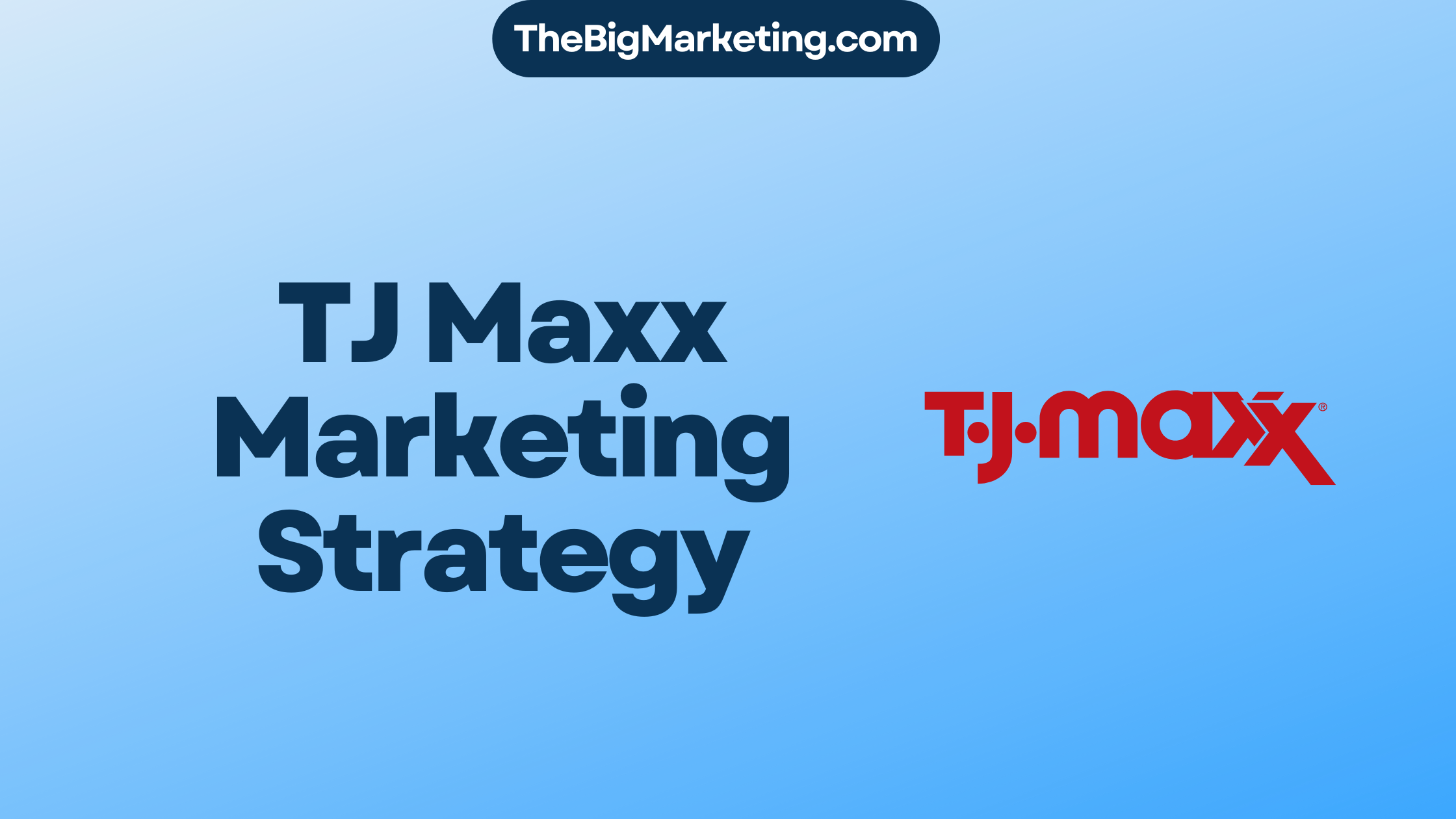Digital signage has become a crucial tool in modern communication, offering businesses unique opportunities to engage with their audience and enhance brand visibility. With the rapid growth of technology, it is essential for businesses to stay ahead of the competition by implementing effective marketing strategies for digital signage.
When it comes to digital signage, it’s not just about displaying content on screens. It’s about creating captivating and impactful experiences that resonate with your target audience. From content planning and design to scheduling and distribution, every aspect of your strategy plays a vital role in driving customer engagement and delivering your brand message.
At AIScreen, we understand the importance of staying ahead in the digital signage game. We offer innovative solutions and expert advice to help businesses create effective digital signage strategies for 2024. With our comprehensive software and industry expertise, you can elevate your marketing efforts and achieve greater success in reaching your audience.
Key Takeaways:
- Implementing effective marketing strategies for digital signage is crucial for enhancing audience engagement and brand visibility.
- Digital signage strategies involve content planning, design, scheduling, and distribution, all aimed at delivering relevant and engaging content to the target audience.
- Setting clear goals and choosing the right KPIs enable businesses to measure success and make data-driven decisions.
- Understanding the target audience, creating engaging content, and strategically placing digital signage screens are key elements in a successful strategy.
- Experimentation, optimization, and alignment with brand identity are essential to keep digital signage fresh, relevant, and impactful.
What is a Digital Signage Strategy?
A digital signage strategy is a carefully crafted plan for creating and managing the visual and informational elements displayed on digital screens. It involves content planning, design, scheduling, and distribution. The goal is to deliver relevant and engaging content to the target audience, which can include advertisements, announcements, news, entertainment, and social media feeds. A well-crafted digital signage strategy optimizes communication and engagement with the audience, enhancing brand visibility and customer interaction.
Content planning is a critical component of the digital signage strategy. It involves determining the type of content to be displayed, identifying the target audience’s preferences and needs, and aligning the content with the overall marketing objectives. This step ensures that the digital signage content is tailored to capture the attention of the audience and convey the intended message effectively.
Designing visually appealing content is another crucial aspect of the digital signage strategy. It involves creating captivating graphics, videos, and animations that align with the brand identity. The design should be visually appealing, easy to read, and capable of conveying information efficiently. Attention to detail in design ensures that the digital signage stands out and attracts the audience’s attention.
Scheduling is an essential part of the digital signage strategy as it determines when and how often the content is displayed. This step requires careful consideration of the target audience’s behavior and habits to ensure maximum visibility and impact. By scheduling the content strategically, businesses can optimize the reach and engagement of their digital signage campaigns.
Effective distribution of digital signage content is crucial for its success. The content should be displayed on screens located in high-traffic areas where the target audience is likely to encounter it. Distribution can include various locations such as retail stores, airports, restaurants, and public spaces. By selecting the right distribution channels, businesses can reach a wider audience and increase the effectiveness of their digital signage strategy.
Key Elements of a Digital Signage Strategy:
- Content planning
- Designing visually appealing content
- Scheduling
- Distribution
By developing a comprehensive digital signage strategy that encompasses these key elements, businesses can enhance their brand visibility, engage their target audience effectively, and achieve their marketing goals.
Example of a Digital Signage Strategy
Here is an example of how a digital signage strategy might be implemented in a retail setting:
| Objective | Content | Design | Scheduling | Distribution |
|---|---|---|---|---|
| Promote new products | Product images, descriptions, and pricing | Vibrant colors, attractive visuals | Displayed during peak shopping hours | In-store screens and video walls |
| Highlight ongoing sales | Sale details, discount codes | Eye-catching banners, bold text | Displayed throughout the duration of the sale | In-store screens and storefront displays |
| Share customer testimonials | Positive customer reviews, photos | Testimonial quotes, customer images | Displayed during off-peak hours | In-store screens and waiting areas |
By implementing a well-planned digital signage strategy, retailers can effectively communicate with their customers, drive sales, and create memorable brand experiences.
The Importance of Setting Goals in Digital Signage Strategy
Setting clear goals is crucial in digital signage strategy. It allows businesses to define objectives and metrics for success, providing a roadmap for effective implementation. One effective approach to goal-setting is using SMART objectives, which are specific, measurable, attainable, relevant, and time-bound.
- Specific: Goals should be clear and well-defined. For example, increasing customer engagement through digital signage.
- Measurable: Goals should have metrics that can be tracked and evaluated. This enables businesses to measure progress and make data-driven decisions.
- Attainable: Goals should be realistic and achievable within the given resources and capabilities of the business.
- Relevant: Goals should align with the overall objectives and vision of the business. Digital signage goals should contribute to the business’s marketing and communication strategies.
- Time-bound: Goals should have a defined timeframe for completion. This creates a sense of urgency and helps prioritize actions.
Setting goals in digital signage strategy enables businesses to stay focused on what they want to achieve. It provides a benchmark for measuring success and allows for strategic adjustments if goals are not being met. By setting objectives, businesses can ensure that their digital signage efforts align with their broader marketing goals and drive meaningful results.
By setting goals, businesses can:
- Measure the effectiveness of their digital signage campaigns and make data-driven decisions for optimization.
- Stay focused and avoid getting sidetracked by irrelevant content or strategies.
- Align the digital signage strategy with broader marketing objectives to drive consistent messaging and branding.
- Evaluate return on investment (ROI) by tracking the achievement of goals and the impact on key performance indicators (KPIs).
- Communicate clear expectations to the team responsible for implementing and managing the digital signage strategy.
Overall, setting clear goals is essential for leveraging the full potential of digital signage. It provides direction, measurement, and focus, enabling businesses to create impactful and results-driven strategies.
Choosing Key Performance Indicators (KPIs) for Digital Signage Strategy
In order to measure the success of digital signage campaigns, businesses rely on Key Performance Indicators (KPIs). These KPIs are essential for accurately evaluating the performance and effectiveness of the strategy. By choosing the right KPIs that align with the goals of the campaign, businesses can make data-driven decisions and implement necessary adjustments to optimize their results.
KPIs provide valuable insights into the impact of digital signage on various aspects of the business, including audience engagement, brand visibility, and customer interaction. They enable businesses to track their progress and make informed decisions based on data analysis, ensuring that the strategy remains on track and meets its objectives.
When selecting KPIs for digital signage strategy, it is important to consider the specific goals and objectives of the campaign. This will allow businesses to identify the most relevant metrics for measuring success. Here are some common KPIs that businesses typically use in digital signage strategy:
- Impressions: This metric measures the number of times a digital signage display is viewed by individuals.
- Engagement Rate: The engagement rate indicates the level of interaction from the target audience, such as clicks, interactions with interactive elements, or social media engagement.
- Conversion Rate: This metric measures the percentage of viewers who take a desired action, such as making a purchase, subscribing to a newsletter, or downloading a resource.
- Dwell Time: Dwell time represents the amount of time that viewers spend engaging with the digital signage content. It is often used as an indicator of audience interest and involvement.
- Return on Investment (ROI): ROI measures the financial return generated by the digital signage campaign compared to the investment made.
By tracking these KPIs and analyzing the data, businesses can gain valuable insights into the effectiveness of their digital signage strategy. These insights enable data-driven decisions, allowing businesses to optimize their campaigns, improve audience engagement, and achieve better results.
Example KPI Table:
| KPI | Description |
|---|---|
| Impressions | The number of times a digital signage display is viewed by individuals. |
| Engagement Rate | The level of interaction from the target audience, such as clicks, interactions with interactive elements, or social media engagement. |
| Conversion Rate | The percentage of viewers who take a desired action, such as making a purchase, subscribing to a newsletter, or downloading a resource. |
| Dwell Time | The amount of time that viewers spend engaging with the digital signage content. |
| Return on Investment (ROI) | The financial return generated by the digital signage campaign compared to the investment made. |
Target Audience Identification and Persona Development
Understanding the target audience is essential in digital signage strategy. Businesses should develop detailed audience personas that capture the demographics, interests, and pain points of the target audience. This information helps tailor the content to meet the needs and preferences of the audience, resulting in more effective communication and engagement.
Demographics
When identifying the target audience, it is crucial to consider demographics such as age, gender, location, and income level. These factors provide valuable insights into the characteristics of the audience and help in creating content that resonates with them.
Psychographics
Psychographics delve deeper into the audience’s attitudes, beliefs, values, and lifestyle choices. Understanding the psychographics of the target audience enables businesses to craft content that aligns with their interests and motivations, fostering a stronger connection and engagement.
Audience Personas
Audience personas are fictional representations of different segments within the target audience. These personas encapsulate the demographics and psychographics of specific groups, allowing businesses to create personalized content for each persona. By tailoring the messaging and delivery to the unique preferences and pain points of each persona, businesses can increase the effectiveness of their digital signage strategy.
| Persona | Demographics | Psychographics |
|---|---|---|
| Young Professionals | Ages 25-35 Urban areas Medium to high income |
Tech-savvy Always connected Value convenience and efficiency |
| Family-oriented | Ages 30-45 Suburban areas Middle-income |
Family-oriented Seek value and quality Enjoy family experiences and activities |
| Seniors | Ages 65+ Rural and suburban areas Retired with fixed income |
Traditional values Seek health and wellness information Enjoy socializing and staying active |
By developing audience personas, businesses can better understand the specific needs, preferences, and pain points of their target audience. This knowledge enables them to create content that effectively communicates with and engages the audience, maximizing the impact of their digital signage strategy.
Creating Engaging Content for Digital Signage
Creating engaging content is crucial for capturing and retaining the viewer’s attention. When it comes to digital signage, it’s important to prioritize dynamic and visually appealing elements to make a lasting impact.
To create engaging content, consider incorporating eye-catching visuals that are relevant to your message. High-quality graphics that reflect your brand’s identity can help create a visually appealing experience for your audience.
Compelling copy is another essential element in creating engaging content for digital signage. Use concise and persuasive language to communicate your message effectively. Choose words that resonate with your target audience and convey your brand’s values and personality.
In addition to static images and text, consider incorporating interactive elements into your digital signage content. This can include touch screens, motion sensors, or QR codes that allow viewers to interact with your content and take actions in real-time.
When designing your digital signage content, keep in mind that visual appeal is key. Use attractive color schemes and fonts that are easy to read. Experiment with layouts and transitions to create a visually captivating experience for your audience.
Remember, engaging content is not just visually appealing, but also provides value to your viewers. Whether it’s informative, entertaining, or even thought-provoking, make sure your content serves a purpose and captures the interest of your target audience.
Incorporating engaging, dynamic, and visually appealing content into your digital signage strategy can significantly enhance audience engagement and make a lasting impression on your viewers.
Timing and Duration of Digital Signage Content
When it comes to digital signage content, timing is crucial. By delivering your content at the right time, you can significantly increase the chances of audience engagement. Consider the following factors to ensure optimal timing and display duration:
- Audience Schedules: Take into account the typical schedules of your target audience. Understanding their daily routines and habits can help you determine the best times to display your content.
- Relevance at Different Times of the Day: Adapt your content to the different periods of the day when your audience’s needs and interests change. Tailor your messages to be contextually relevant and capture their attention.
- Ideal Display Duration: Find the right balance between capturing attention and avoiding overexposure. Consider the average dwell time in specific locations and adjust the display duration accordingly.
- Context Relevance: In high-traffic areas or locations with shorter dwell times, prioritize content that can be consumed quickly and is contextually relevant. Grabbing attention within a limited timeframe is essential.
To demonstrate the impact of timing and duration in digital signage content, consider the following table:
| Location | Display Time | Content Type |
|---|---|---|
| Restaurants | 8:00 AM – 10:00 AM | Breakfast promotions, early bird specials |
| Airports | 5:00 PM – 9:00 PM | Flight information, duty-free offers |
| Shopping Malls | All day | Sales, new product launches, fashion trends |
By tailoring the content timing, display duration, and context relevance, you can optimize the impact of your digital signage strategy and effectively engage your target audience.
Strategic Placement of Digital Signage Screens
Strategically placing digital signage screens is essential to maximize their visibility and impact. When choosing the location of digital signs, factors such as foot traffic patterns, potential distractions, glare, and the activities of the target audience should be carefully considered. By strategically placing screens in high-traffic areas, customer pathways, checkout counters, waiting areas, in-store displays, and outdoor locations, businesses can effectively reach their target audience and make a lasting impression.
One of the key considerations in screen placement is foot traffic patterns. Identifying areas where there is a high concentration of people passing by can significantly increase the visibility of the digital signage. For example, placing screens near entrance points, near escalators or elevators, and along popular walkways can capture the attention of a larger number of individuals.
Potential distractions should also be taken into account. Avoid placing digital signage screens in areas where there are competing sources of visual stimulation, such as near bright windows or displays that may divert attention away from the content. By minimizing distractions, the visibility and impact of the digital signage can be enhanced.
Glare is another important factor to consider when determining the placement of digital signage screens. Positioning screens away from direct sunlight and minimizing reflective surfaces can help ensure that the content remains visible and legible at all times. Screen placement that prioritizes optimal viewing angles contributes to a better user experience and increases the effectiveness of the communication.
The activities of the target audience should also be taken into consideration when deciding on screen placement. For example, placing screens in waiting areas or checkout counters allows for maximum exposure to individuals who are more likely to engage with the content during moments of downtime or when they are actively making a purchase decision. By understanding the behaviors and preferences of the target audience, businesses can strategically position digital signage screens to have a greater impact on viewer engagement.
Examples of Strategic Screen Placement:
1. High-Traffic Areas: Place screens near entrances, exits, escalators, or elevators to capture the attention of a large number of people entering or leaving the premises.
2. Customer Pathways: Position screens along popular walkways within your establishment to ensure that they are easily visible to customers as they move through the space.
3. Checkout Counters: Display screens near checkout counters to engage customers during their purchase process and provide additional information or promotions.
4. Waiting Areas: Install screens in waiting areas to entertain or inform customers while they are waiting for service.
5. In-Store Displays: Incorporate screens into your merchandise displays to highlight product features, promotions, or customer reviews.
6. Outdoor Locations: Utilize outdoor digital signage screens to capture the attention of passersby and create brand awareness in highly visible, high-traffic areas.
Strategic placement of digital signage screens plays a vital role in maximizing their visibility and impact. By considering factors such as foot traffic patterns, potential distractions, glare, and the activities of the target audience, businesses can ensure that their digital signage effectively reaches and engages their intended viewers.
| Factors to Consider | Benefits |
|---|---|
| Foot traffic patterns | – Increased visibility |
| Potential distractions | – Enhanced focus on content |
| Glare | – Improved legibility |
| Activities of the target audience | – Higher engagement |
Experimentation and Optimization in Digital Signage Strategy
Experimentation and optimization are essential components of a successful digital signage strategy. Businesses must continually test different versions of content, formats, and designs to identify the most effective approach. By embracing a culture of experimentation and seeking feedback from fresh eyes, marketing teams can uncover areas for improvement and make data-driven decisions.
Testing different content variations allows businesses to gather insights about audience preferences, engagement levels, and messaging effectiveness. By analyzing the results, marketers can optimize their digital signage strategy to better resonate with their target audience.
Optimization involves using the collected data and insights to refine and improve the digital signage strategy. This iterative process enables businesses to continually enhance the impact of their communication and engagement efforts.
Continuous improvement is crucial in the dynamic landscape of digital signage. By remaining open to change and incorporating feedback, businesses can stay ahead of evolving consumer expectations and emerging trends.
To illustrate the importance of experimentation and optimization in digital signage strategy, consider the following examples:
Benefits of an Aligned Digital Signage Strategy with Brand Identity
Aligning your digital signage strategy with your brand identity offers numerous benefits, including reinforcing your messaging and building brand recognition. By incorporating elements such as logos, colors, and fonts consistent with your brand identity, you create a consistent look and feel across all your digital signage channels.
Consistency is key in establishing a strong and recognizable brand. When your digital signage reflects your brand identity, it reinforces your messaging and strengthens the overall impact of your marketing efforts. Customers are more likely to engage with and remember your brand when they encounter a consistent visual experience across various platforms.
Moreover, by aligning your digital signage strategy with your brand identity, you create a cohesive brand experience for your audience. Consistency across your website, social media, and digital signage channels helps your customers connect the dots and reinforces your brand’s messaging at every touchpoint.
Incorporating your brand’s visual identity into your digital signage also helps differentiate your business from competitors. Customers will recognize and remember your brand more easily when they see familiar colors, logos, and fonts on your digital signage.
An aligned digital signage strategy with brand identity also enhances brand recognition. When customers consistently encounter your brand’s visual elements in various locations and contexts, they become more familiar with your brand. This familiarity leads to increased brand recognition and can ultimately drive customer loyalty and repeat business.
Overall, aligning your digital signage strategy with your brand identity is a powerful way to reinforce your messaging, enhance brand recognition, and create a cohesive brand experience for your audience. By incorporating consistent visual elements across all your digital signage channels, you can establish a strong and memorable brand presence that resonates with your customers.
| Benefits of Aligned Digital Signage Strategy with Brand Identity |
|---|
| Reinforces brand messaging |
| Builds brand recognition |
| Creates a cohesive brand experience |
| Differentiates your business from competitors |
| Enhances brand visibility and recall |
Keeping Digital Signage Fresh and Relevant
For digital signage to effectively engage the audience, it’s essential to keep the content fresh and relevant. By regularly updating the content with new information, promotions, and updates, businesses can create a dynamic and engaging experience for viewers.
One way to maintain content freshness is by incorporating real-time updates. This could include live feeds, news tickers, or event announcements that keep the audience informed and engaged. Real-time updates not only provide valuable and current information but also create a sense of urgency and relevance.
Social media integration is another powerful tool to keep digital signage content fresh. By displaying curated social media feeds or user-generated content, businesses can tap into the authenticity and engagement of social platforms. This promotes audience interaction and expands the reach of the digital signage strategy.
Interactive elements
Including interactive elements in digital signage content is another effective way to keep it fresh and maintain audience engagement. Interactive touchscreens, QR codes, or interactive games can create an immersive and interactive experience for viewers. Not only does this capture attention, but it also encourages active participation and enhances brand recall.
A visually appealing and relevant image enhances the effectiveness of any content. To illustrate this, consider the following image:

By leveraging content freshness, businesses can keep their digital signage strategy engaging and relevant, helping to capture and retain the attention of the audience. Regularly updating content, incorporating real-time updates and interactive elements, and integrating social media are key practices to ensure the ongoing success of a digital signage strategy.
Conclusion
Implementing effective marketing strategies for digital signage in 2024 is essential for businesses to achieve success in customer engagement and communication. To create impactful digital signage campaigns, careful planning, goal-setting, content creation, and optimization are crucial.
Understanding the target audience is the foundation of a successful digital signage strategy. By developing detailed audience personas and tailoring content to their needs and preferences, businesses can enhance brand visibility and increase customer interaction.
Creating engaging content is key to capturing and retaining audience attention. Dynamic and visually appealing elements such as eye-catching visuals, compelling copy, and interactive features should be incorporated to create a memorable experience.
Strategic placement of digital signage screens maximizes visibility and impact. By considering factors such as foot traffic, potential distractions, and target audience activities, businesses can ensure that their messages reach the right people at the right time.
Continual experimentation and optimization are essential in the rapidly evolving digital signage landscape. By testing different content versions, formats, and designs, businesses can make data-driven decisions and improve their strategies.
Lastly, aligning the digital signage strategy with the brand identity reinforces messaging and builds brand recognition. Consistency in visual elements across different platforms, including websites and social media, creates a cohesive brand experience for the audience.
In summary, by implementing effective marketing strategies for digital signage, businesses can drive customer engagement, enhance brand visibility, and achieve effective communication in 2024 and beyond.
FAQ
What is a digital signage strategy?
A digital signage strategy is a carefully crafted plan for creating and managing the visual and informational elements displayed on digital screens. It involves content planning, design, scheduling, and distribution to deliver relevant and engaging content to the target audience.
Why is setting goals important in digital signage strategy?
Setting goals in digital signage strategy helps define the objectives and metrics for success. It provides a framework for staying focused, measuring success, and making data-driven decisions based on SMART (specific, measurable, attainable, relevant, and time-bound) objectives.
How do you choose Key Performance Indicators (KPIs) for digital signage strategy?
Choosing KPIs aligned with the goals of the strategy allows for accurate measurement of performance. Businesses should select relevant metrics that provide valuable insights, enabling data-driven decisions and adjustments as needed.
Why is identifying the target audience important in digital signage strategy?
Understanding the target audience helps tailor the content to meet their needs and preferences, resulting in more effective communication and engagement. Developing detailed audience personas capturing demographics, interests, and pain points assists in creating targeted messages.
How do you create engaging content for digital signage?
Creating engaging content involves prioritizing dynamic and visually appealing elements such as eye-catching visuals, compelling copy, and interactive features. High-quality graphics and visuals that reflect the brand’s identity are important for a visually appealing experience.
Why is timing and duration important in digital signage content?
Delivering content when the target audience is most likely to notice it increases the chances of engagement. Considering factors such as audience schedules, relevance at different times of the day, and ideal display duration enhances the effectiveness of the content.
How important is the strategic placement of digital signage screens?
Strategic placement maximizes visibility and impact. Businesses should consider factors such as foot traffic patterns, potential distractions, glare, and activities of the target audience when choosing the location of digital signs.
Why is experimentation and optimization important in digital signage strategy?
Experimentation and optimization involve testing different versions of content, formats, and designs to improve the strategy. By being open to change and continuous improvement, businesses can make data-driven decisions and identify areas for enhancement.
What are the benefits of aligning the digital signage strategy with brand identity?
Aligning with brand identity reinforces messaging and builds brand recognition. Incorporating elements such as logos, colors, and fonts consistent with the brand’s identity creates a cohesive look and feel across all digital signage platforms.
How do you keep digital signage content fresh and relevant?
Regularly updating content with new information, promotions, and updates, as well as incorporating real-time updates, social media integration, and interactive elements, helps maintain the freshness and relevance of digital signage content.
What are the key points to remember about effective marketing strategies for digital signage in 2024?
Effective marketing strategies for digital signage in 2024 require careful planning, goal-setting, content creation, and optimization. By understanding the target audience, creating engaging content, and strategically placing digital signage screens, businesses can enhance brand visibility, customer interaction, and overall communication effectiveness.







